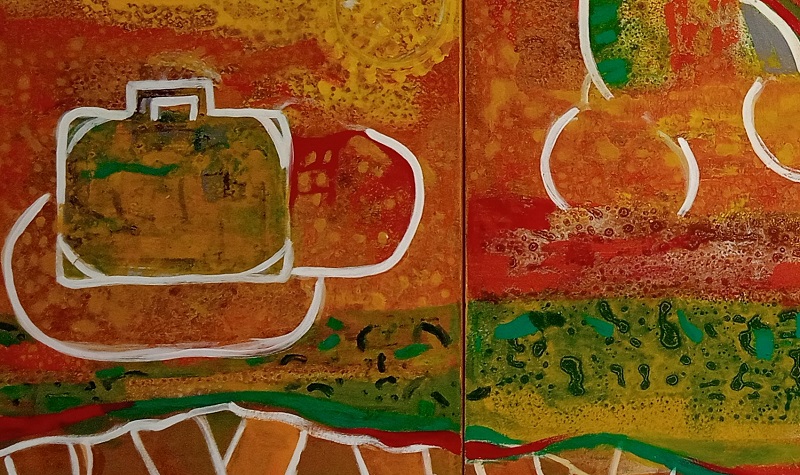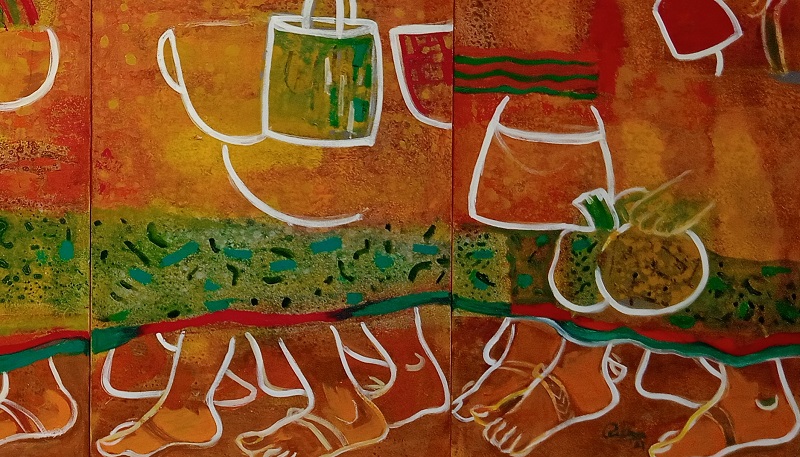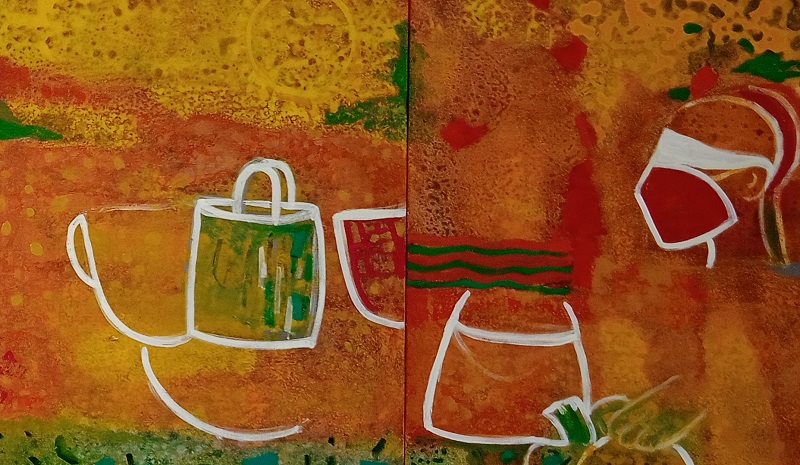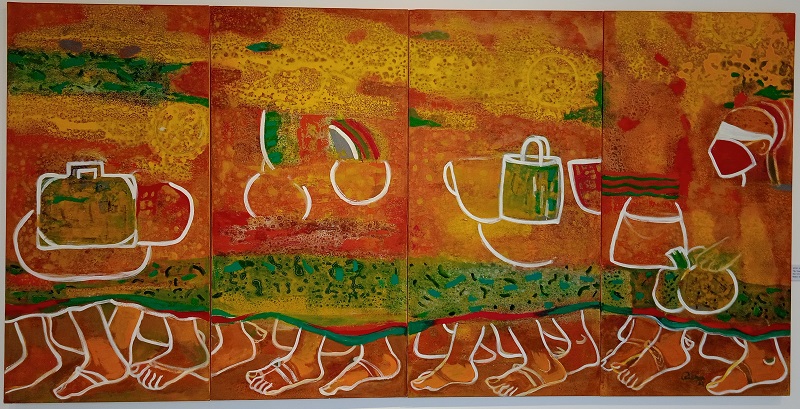It’s not surprising that the real-life experience is reflected in the artwork. We use painting or literature to understand the social settings of a time because they might be included in that ‘creative’ expressions. What is creative is not something that excludes all those social realities; some painters may use the facts to create an artwork, and some may not use them directly but subtly.
Artist Rekha Rao’s solo show, ‘Ibis Knows Best‘, opened in Bharat Art Space Gallery in New Delhi, Curated by renowned curator-art critic Johny M.L give a glimpse of the creative expressions and society; how they are connected and pressing issues of our time? One of the paintings, titled ‘Times We Live In’, brings the migrant labour movement in an abstract form. The artwork’s title subtly narrates the horrors of our time and gets the audience’s attention to a vast canvas as much as they want it to be.

We all are aware of the COVID-19 pandemic situation. What we faced, managed and survived; was an uncertain episode of an unusual crisis abiding fate with countless demises. Generalised financial recession, jobless people, quarantine, inescapable Lockdown, and travel-ban are fundamental characteristics of the Pandemic, as we know.
Most of us are the victim of the Pandemic, but who suffered a lot more than anyone? The migrant labours in India are the most sorrowful during the Pandemic. When Lockdown was declared suddenly, migrant labourers from different parts of the country prompted the need to return home to safety. Thousands of people walk from the Urban cities to their distant rural villages. Only some people reached their homes; many died without food, water and proper medicine.
The data shows more than 40 million people walked home in the first wave of Covid and the Lockdown. Around 200 hundred migrant workers died from road accidents; there was no vehicle to carry them home but to kill them. The Pandemic had lockdowns and travel bans imposed by governments worldwide as an essential to tackle the Pandemic and rein in its outspread. A lockdown is set and declared to create problems for millions due to economic and social vulnerability.

Nobody forgets the visual of migrant labourers walking with their tiny bags, luggage with their little children and old parents, and grant parents. We didn’t understand what was happening and how to tackle and overcome it; the Pandemic became worse for migrant labours, especially when we masked situations slowly unmasked and showed the complex realities.
Many visual-textual materials are available on the net about the migrant labour movement in India during the Pandemic. Nothing changes our life like a Pandemic, and the word social distancing significantly impacts our social life.
Rekha Rao’s painting on this subject nothing gives us direct but abstract. The migrant labour movement from Urban cities to their villages, what do they carry, and what do they have? Where are their children, parents, grandparents, and pets? In this vast canvas, the artists portray them to the bottom as their feet move from one point to another. We can only see the migrant labour ‘Feet’ on the canvas; most don’t even have slippers. What leaked out on the Red canvas; was migrants’ labourer’s bags, poorly wrapped luggage, and their scattered life and dreams.
‘Subtle solutions for social problems do appear in her (Rekha Rao) works as she insights that there couldn’t be a painting from her studio that does not speak of a story, and every story has an entry point as well as an exit point, write Johny ML in his curatorial note for her show catalogue.

Most of her works are in a quasi-abstract and quasi-figurative style that allows storytelling possible, as mentioned by Johny ML, and in this ‘Times We Live In’, Rekha Rao’s style overturns the sorrowful melodies into a Reddish monologue. As noted by the curator, ‘We see the exodus of ordinary people in search of life or escaping from the cruel sides of it. They flee from the cities because of the ignorance of the power and why ‘power’ ignores them because they are powerless; they are poor.
The landscape that Rekha Rao narrates for the migrant labour movement is splendid and grand. Where we can find those people’s life and imagination is more than an ambiguous question. The working-class people from the surrounding space are a matter of Rekha Rao’s art practice. That flow is visible in this ‘Times We Live In’ as an abstract dream of an artist.
Krispin Joseph PX

Krispin Joseph PX, a poet and journalist, completed an MFA in art history and visual studies at the University of Hyderabad.





